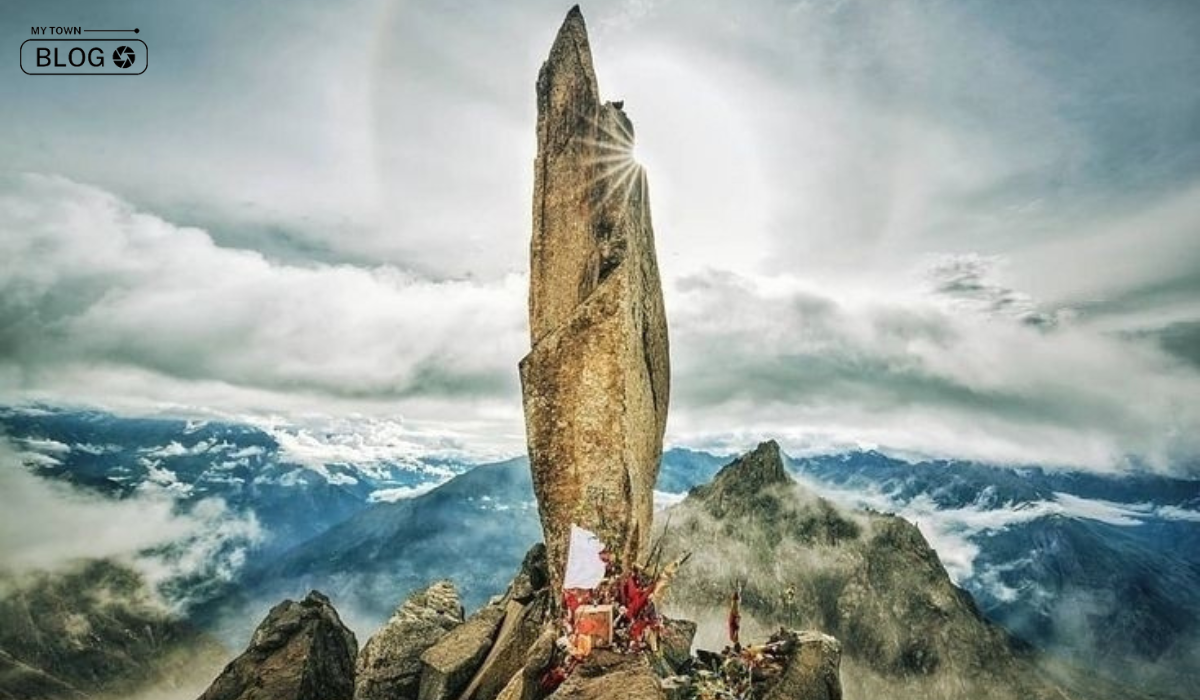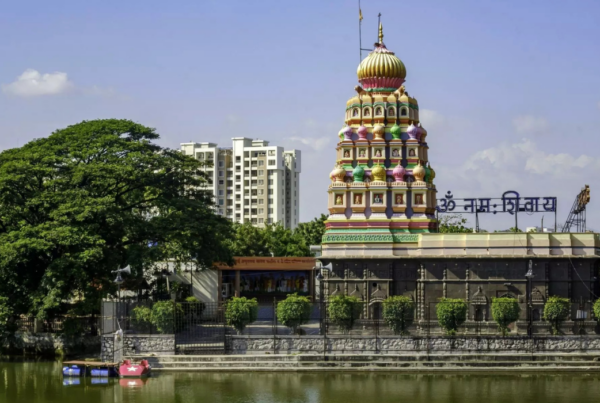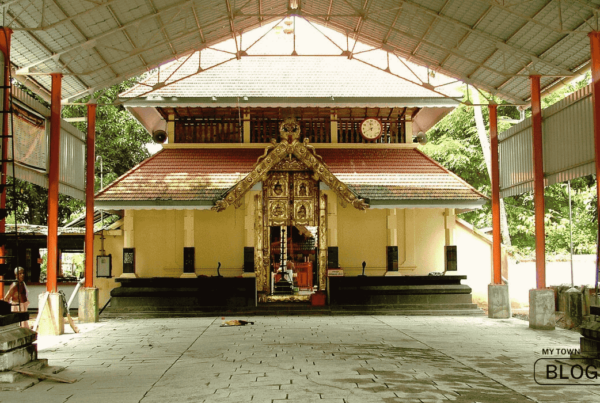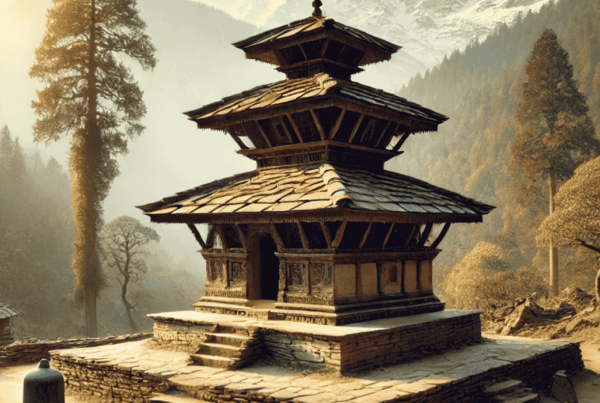The journey for Kinner Kailash Shivlingam provides a unique look at one of Lord Shiva’s legendary temples. A challenging route is suitable for people looking for a fun challenge because it is not for the weak. Experience a wonderful trip with beautiful views of peaks covered in snow, beautiful valleys, and running rivers on the Kinner Kailash Trek Circle.
People of faith in Lord Shiva have particular locations in their hearts for the magical beauty of Kinnaur. The location is the home of the fantastic 79-foot-tall Shiva linga, a tower of concrete that is carefully placed over a rock stone in the shape of a triangle. During the day, this famous structure has an exciting change, turning from white immediately before sunrise to yellow right away, to bright red after sunset, and finally black after the sun goes down.
History exists in Parvati Kund, which is located at a height of 14,900 feet close to Kinnaur Kailash Parvat. This beautiful lake is said to have been created by Goddess Parvati herself. Adjacent to Parvati Kund lies Ganesh Bagh, also known as “Aashiqui Park,” believed to be the sacred meeting place of Lord Shiva and Mata Parvati.
In Hindu legend, Lord Shiva hosted the yearly winter meeting of gods and goddesses in Kinner Kailash. Over these historic views, the trek offers religious and physical challenges.
History:
Kinner Kailash is important for it is the winter palace of the Hindu greatest god Lord Shiva and his wife, the mother goddess Goddess Parvati. The legendary story describes how Lord Shiva and Goddess Parvati first in heaven and how their love grew at Kinner Kailash. As a symbol of their sacred union, they created Parvati Kund, a revered lake near the peak believed to possess healing properties. Lord Shiva calls a meeting of gods and goddesses to Kinner Kailash in the winter, and also the Kinner Kailash Shivling, a natural rock structure that looks like a Shiva lingam, changes color seriously during the day.
Is Kinner Kailash beloved in Hinduism, but Buddhists also deeply value it? It is believed to be one of the 24 places where the first monk of Tibetan Buddhism, Padmasambhava, meditated and became inspired. Padmasambhava, sometimes referred to as Guru Rinpoche or the Second Buddha, was important in introducing Buddhism into Tibet and other Asian countries. His footprints are said to be located on a rock close to Parvati Kund, which improves the spiritual attraction of Kinner Kailash.
How Your Journey Starts from Begining to the End:
First Day Journey Of Kinner Kailash Yatra:
When going out on the trek, all travelers have to register at the Indian Tibet Border Patrol (ITBP) checkpoints, which are located at a height of 8,727 feet, nearly 41 km from Reckong Pyo, the Kinnaur district location. After registration, the next stop is Lambar, a distance of 10 kilometers away, and sits at a height of 9,678 feet. Mules can be enlisted for assistance in covering this distance, offering a practical means of reaching Lambar.
Day Two Journey Of Kinner Kailash Yatra:
After reaching Lambar, the next part of the trip is an 8-hour trek to Charang, which is located at a height of 11,319 feet. The climate changes to higher places over Lambar, meaning the number of trees to go down. Upon entering Charang village, a guest house affiliated with the Irrigation and Health Department is accessible, providing a convenient spot for rest and the option to pitch a tent. Subsequently, the trek continues with a 6-hour climb to Lalanti, reaching an altitude of 14,108 feet.
Day Three Journey Of Kinner Kailash Yatra:
The temple of Rangrik Tungma stands at an elevation of 2 kilometers from Charang, an essential stop on the pilgrimage, as the parikrama is considered incomplete without paying homage to this sacred site. Following this visit, the journey continues with a demanding 14-hour climb.
Day Four Journey Of Kinner Kailash Yatra:
During this leg of the journey, travelers face the dual challenge of ascending a considerable distance from Lalanti Pass to Charang Pass, and concurrently, descending a significant distance to witness the divine presence of Chitkul Devi. This day presents a demanding mix of uphill and downhill terrains, adding both physical and spiritual dimensions to the trek.
How To Plan Your Trip:
If you’re thinking of traveling to Kinner Kailash, a few important information and ideas may help you manage your trip:
What Permits Are Required For the Trip:
If you plan to travel to Kinnaur to participate in the yatra or trek, you must first get an Inner Border Pass (ILP). Requesting an ILP can be done manually at the District Magistrate Office in Reckong Peo, the Kinnaur district official center, or online at [this website]. To get permission, you have to submit identity proof, a passport-sized photo, and a travel plan with a little payment.
The Interior Border Permit has a 15-day expiry date; if your exploration requires more time than this, an extra day can be booked. Before starting on your journey, make sure you complete this important process. It will guarantee that you follow the local rules and make your stay in Kinnaur simpler and less difficult.
Clothing And types of equipment:
The successful yatra or trek requires having all of the proper equipment and clothing. A complete medical kit, a suitcase, a sleeping bag, a shelter, a blanket, a cooking device, tools, food, water-plastic bottles, and a light source are all essential. Carry a camera, compass, and map as well as record the journey’s special moments.
Make sure to prepare yourself properly for the different weather conditions. To fight the cold, include basic items like sweaters, coats, caps, gloves, socks, and heavy boots. To protect against sudden rain or snowfall, it’s also a good idea to pack raincoats or jackets with your equipment.
You’ll be fully prepared to face any challenges of the yatra or trek if you carefully pack the necessary items, providing a safe and enjoyable time within the incredible beauty of the location.
Medical Facilities And Safety Precautions:
Ensuring safety during the yatra or trek requires careful consideration of precautions and access to medical facilities. It is important to adjust to higher heights by taking sufficient rest and drinking sufficient water. It’s important to stay away from alcohol and tobacco because they can make health issues more serious. By maintaining with the group at all times and according to your guide’s rules, you can improve safety. Advising friends and relatives of where you are and contact information is an educated choice.
Please have a basic medical kit with you that can treat common diseases such as sickness, pain, vomiting, and fever. Add emergency supplies like painkillers for injuries, antibiotics for infections, and Diamox for sickness at high altitudes. Basic medical facilities are available in Tangling village (for yatra) and Charang village (for trek). To travel to the nearest hospital, it can be necessary to leave by aircraft or ambulance in cases of serious injury or illness. Keep your health first by taking care of possible problems before they happen while traveling.
How To Reach Kinner Kailash:
By Air:
Chandigarh Airport is the closest aircraft to Kinner Kailash Trek. Chandigarh has daily flights to multiple cities in India. Upon arrival, one can easily proceed to Tangling by hiring a taxi or taking a bus for a convenient and scenic journey to reach the destination.
By Rail:
Kinnaur lacks a railway network, and The nearest train stop is Kalka, located on a five to six-hour journey by train from Chandigarh and Delhi. From Kalka, travelers can opt for local buses or taxis to reach the starting point of the Kinner Kailash trek.
By Road:
Taxis, jeeps, and buses stand out as the preferred modes of transportation for reaching Kinnaur, facilitated by the well-connected National Highway 22 (NH22). The Himachal Pradesh Transport Corporation (HPTC) operates a comprehensive network of buses that link various parts of Kinnaur. The availability of regular buses and taxis makes it convenient to access destinations like Kalpa and Reckong Peo. An alternative process for people coming from Chandigarh or Delhi is to hire a cab or taxi to get to Shimla and then get a local taxi for the journey to Twisting.
Kinner Kailash The Trek FAQs:
What is the significance of Kinner Kailash Trek?
As Kinner Kailash is the winter palace of Lord Shiva and Goddess Parvati, it has religious meaning. In Buddhism, it is also respected as one of the locations where the Buddha practiced meditation and got knowledge.
How can I get the trek’s Inner Line Permit (ILP)?
For the trek, an Inside Limit Permit (ILP) is required. You can visit the local Magistrate Office at Reckong Peo, Kinnaur district, or submit online. Send in your passport-sized photo, proof of identity, and trip plans at a small cost.
What gear should be used for the Kinner Kailash trek?
A backpack, sleeping bag, tent, mat, stove, tools, food, water bottles, a torch, medical kit, map, compass, and camera are all required pieces of gear. For changing weather, warm clothing, raincoats, or umbrellas are also important.
Are there medical facilities along the trek route?
Basic medical facilities are available in Tangling village (for yatra) and Charang village (for trek). Taking a medical bag with usual medicines and medical supplies for illnesses, injuries, and sickness at heights would be helpful.
How do I reach Kinner Kailash by air?
The nearest airport is Chandigarh Airport. Regular flights arrive in Chandigarh, from which you can rent a car or go by bus to Getting caught.
Is Kinnaur home to a railway system?
Kinnaur has a transport system. The nearest train station is Kalka, which is a five to six-hour travel by train from Chandigarh and Delhi. You can take local buses or cabs from Kalka to the starting point of the journey.
Which kind of traveling is the most successful to get to Kinnaur?
It is best to use buses, jeeps, and cabs to go to Kinnaur. The National Highway 22 (NH22) connects, making easy access convenient. The Himachal Pradesh Tourism Corporation (HPTC) runs buses to many places in Kinnaur.
If my walk takes more than 15 days, is it possible for me to extend my Inner Line Permit (ILP)?
In this case, if the journey exceeds 15 days, one may extend the ILP. Make sure you fulfill the extension process in time for the first permit to expire.
What does Parvati Kund, so close to Kinnaur Kailash Parvat, mean?
Parvati Kund is credited to the goddess Parvati. Located close to Ganesh Bagh, the famous meeting spot of Lord Shiva and Mata Parvati, it is mythologically important.
Is the possible Kinner Kailash path right for first-timers?
The difficulty of the journey advises against beginners participating. Because of the many terrains and altitudes, it calls for physical stamina and readiness. It’s best to have previous trekking experience.








